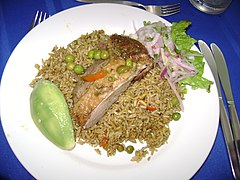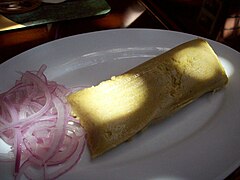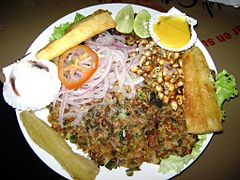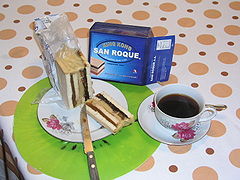Folklore and customs of Lambayeque
Folklore
It is characterized by the joy of its dances, such as the dance of the northern sailor and also the tondero and the cumanana, which comes from the cities adjacent to Morropón, in Piura. The stunned sailor is practiced, which is clearly from Lambayeque and it is also common to find it in Bajo Piura and Tumbes as a detached form of both. Folk medicine or quackery is also practiced using herbs and other products, as well as magical rites.
A traditional stamp is the presentation of the Peruvian Paso horse ridden by expert chalanes.
Gastronomy
Lambayeque is considered the land of good eating, good drinking and a significant gastronomy site in Peru. Its cuisine dates back to ancient times. It is said that a table that is attractive to the palate should have two kinds of dishes: the appetizers (light, strongly seasoned and spicy sandwiches) and the nudos (main or main courses).
Among the first are chinguirito, fish cebiche, shellfish, chirimpico, panquitas, cured meats and humitas, all accompanied by boiled yucas and mote. Among the seconds we have the chiclayana rice with duck, the kid dry, the Ferreñafana cause, the fried, fish chilcano, the aguaditos, the thickened, turkey pepián and ray omelette.
The typical sweets are the king kong of manjarblanco and other flavors, stuffed dates, alfeñique, candied peanuts, crushed quince, picarones and fig preserves.
You usually drink chicha de jora (traditionally served to taste in "potos") or llonque (a brandy made from sugar cane).
Crafts
The craft
In the Lambayeque Region it is based on materials such as straw toquilla and palm, vegetable fibers such as wicker, laurel, willow and textiles as marked and embroidered waist looms. They complement the artisanal activity ceramic, utilitarian and artistic products, goldsmiths and leather.
Among the elaborated products we will find hats and straw representations; cloaks, saddlebags, varied clothing and utilitarian objects made on waist looms; natural fiber rugs and kitchenware; pre-Inca representations made of ceramics and metal; and leather items.
Healers and shamans
Lambayeque is one of the centers with the longest tradition of quackery and magic in Peru. The oldest evidence of this fact is found in the remains of pottery. There are Moche ceramics describing scenes of magical healings and even representations on cupisnique ceramics of the cactus known as "San Pedro" (Trichocereus pachanoi), with which an entheogenic drink of great ritual importance is prepared. Today, the healers of the so-called northern table, heirs of ancestral traditions, are still very well received and successful among the population, since they mostly treat psychosomatic symptoms (to which they attribute a magical origin) that doctors Westerners do not usually attend due to their purely organic training, such as the "evil eye", the "cuaque", the "damage" (caused by a "malero" sorcerer), the "muchaca" (caused by accidental contact with the remains of a "clean"), etc.
Contenido relacionado
Hitotsume-kozo
Mayalde Group
Guadalajara Mexico)






